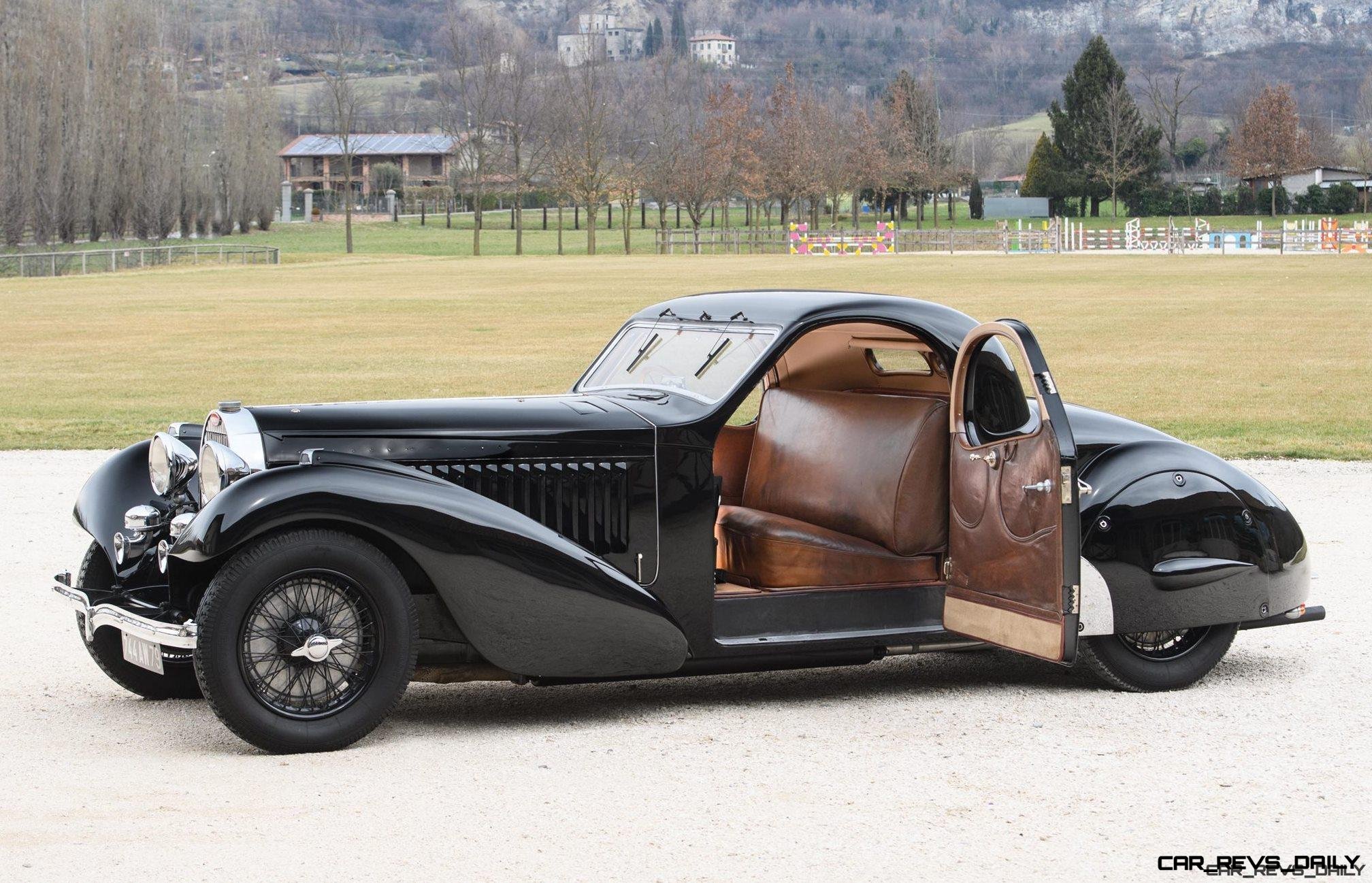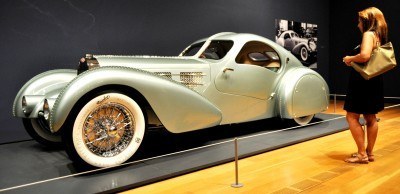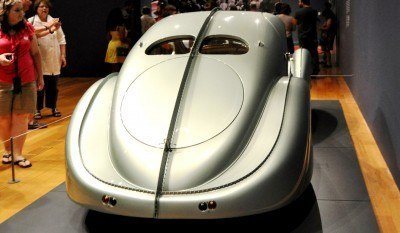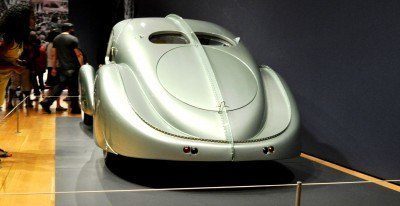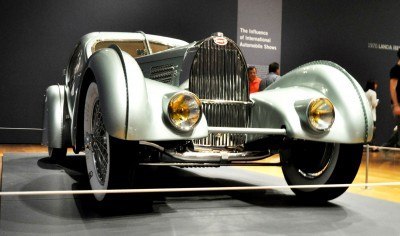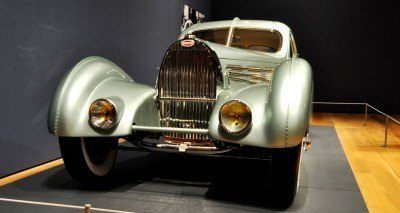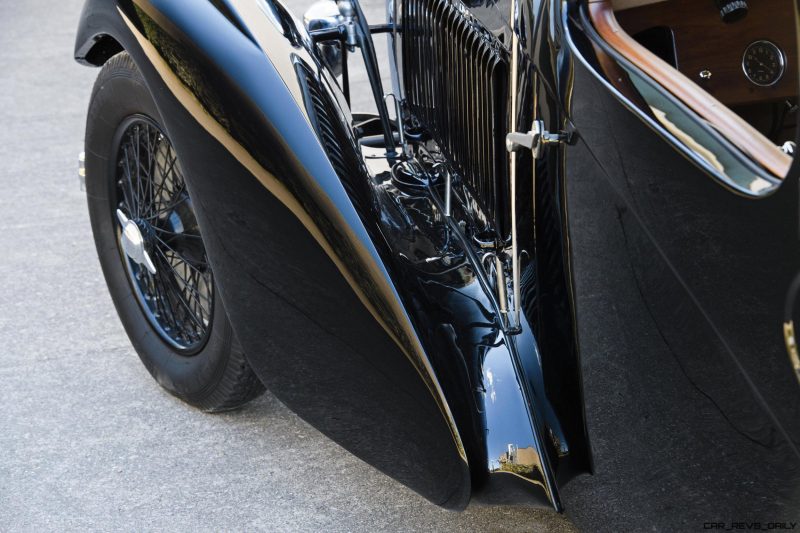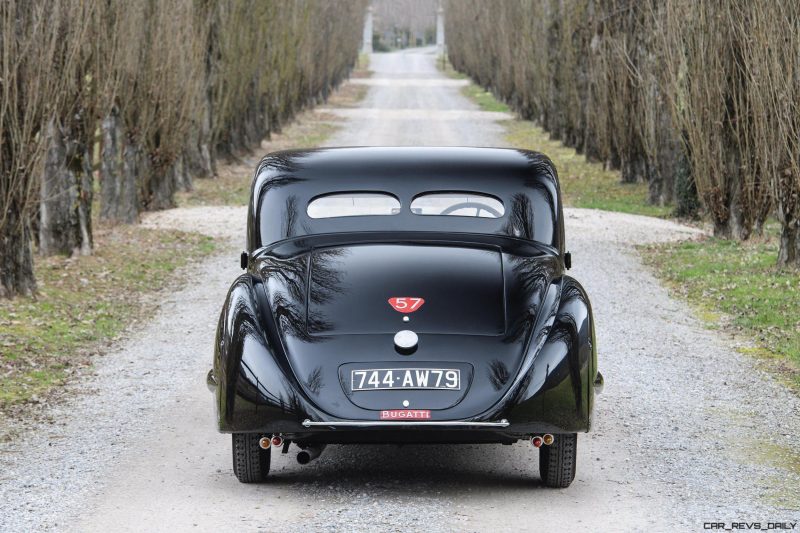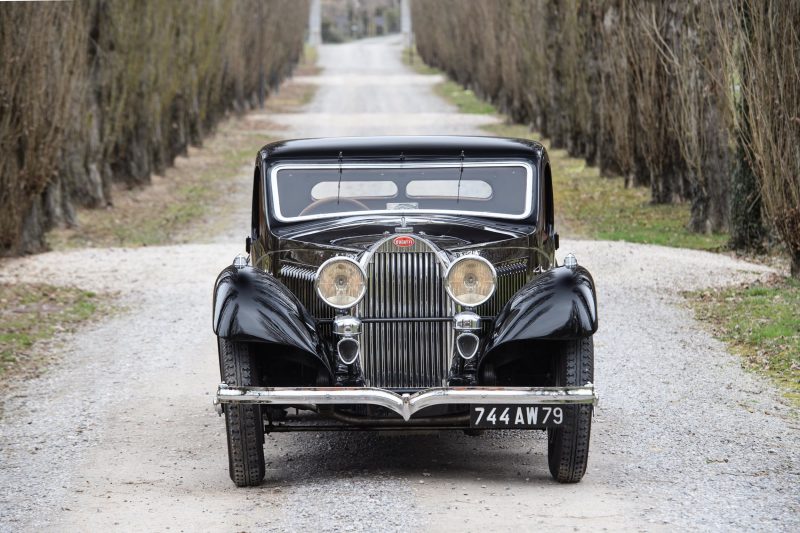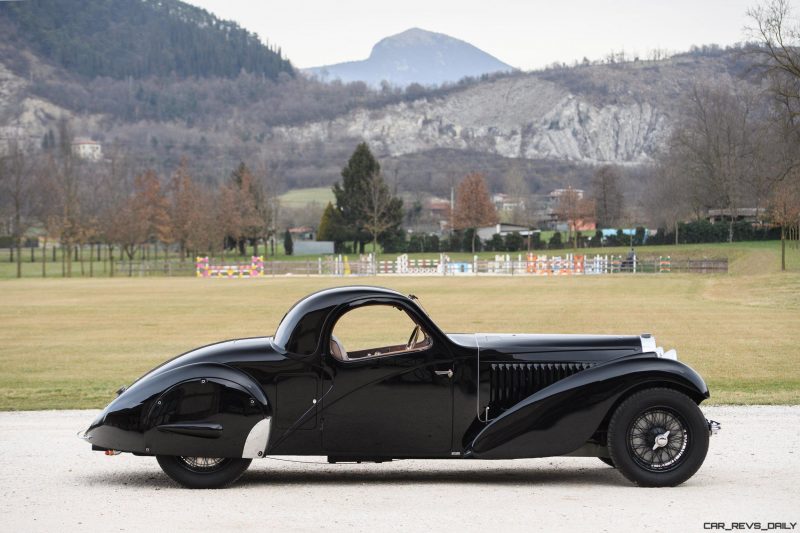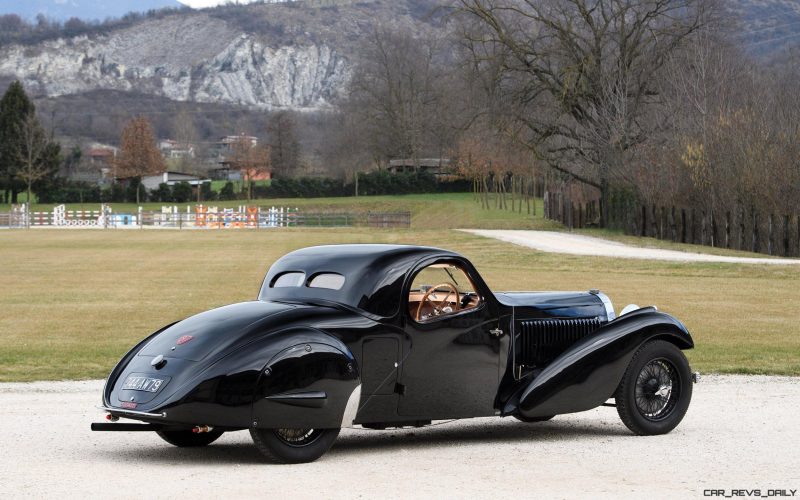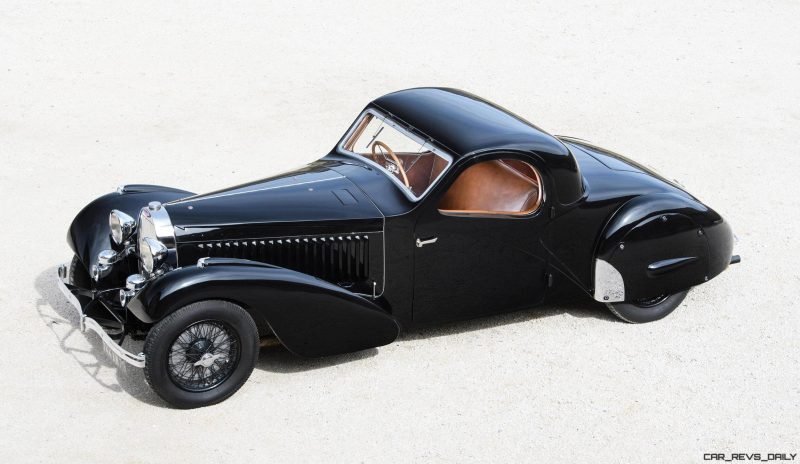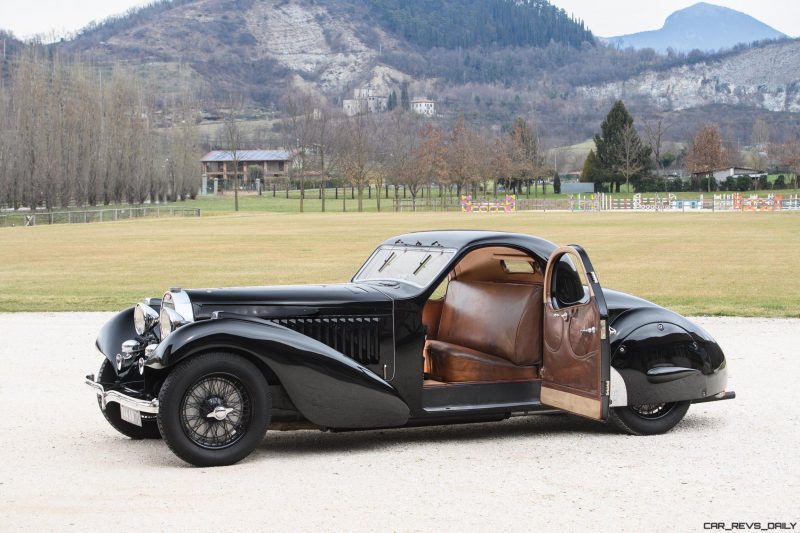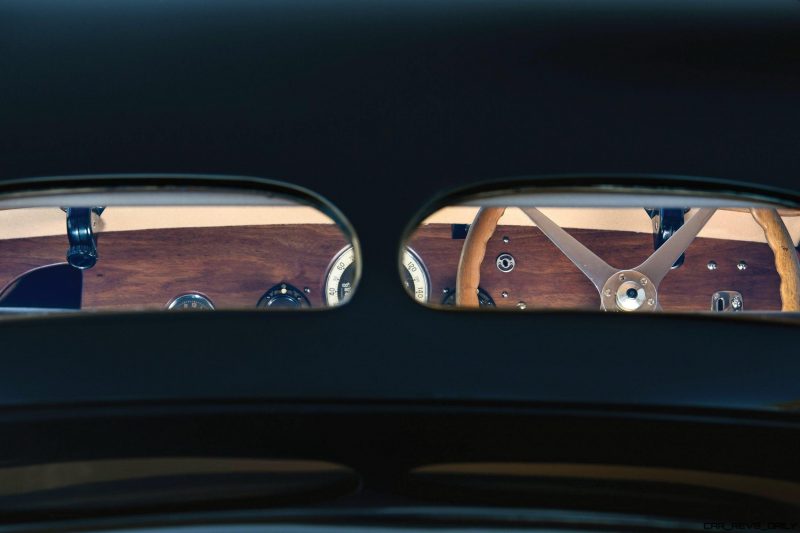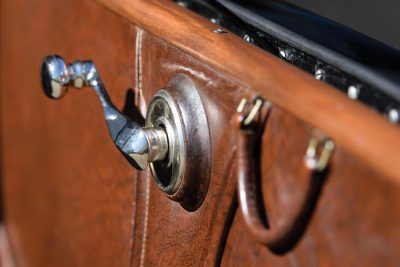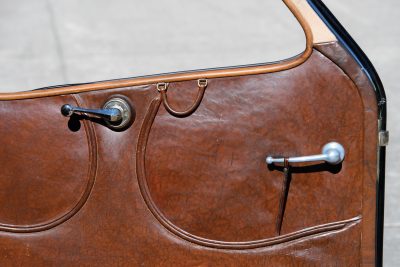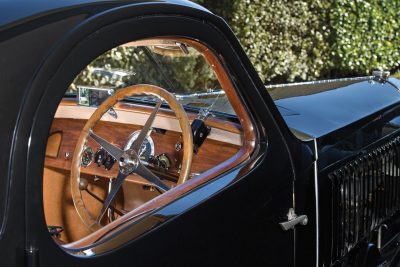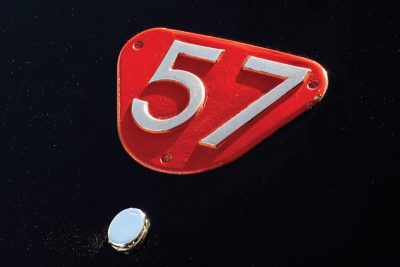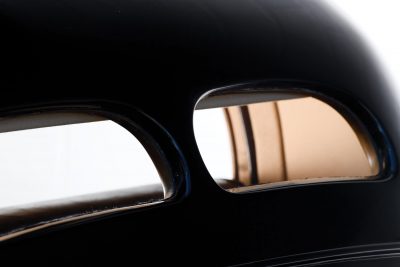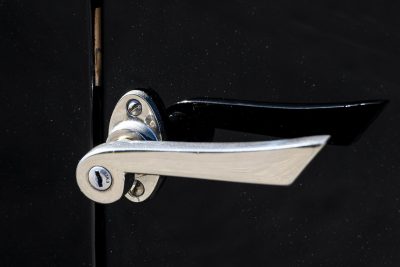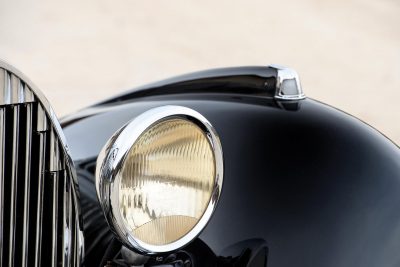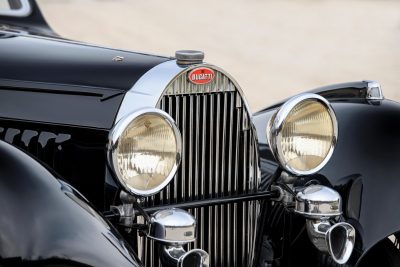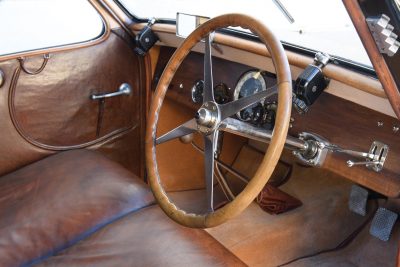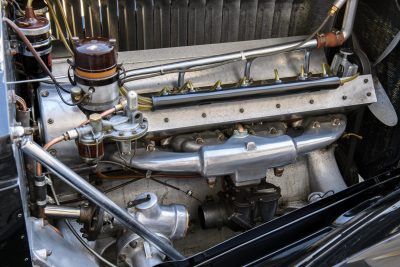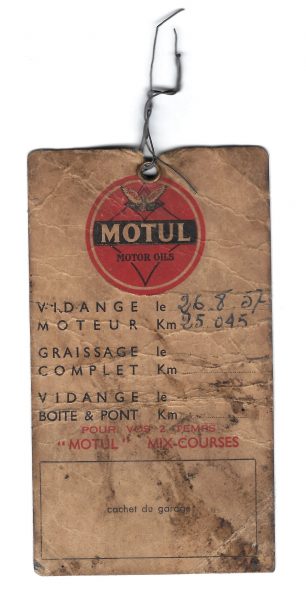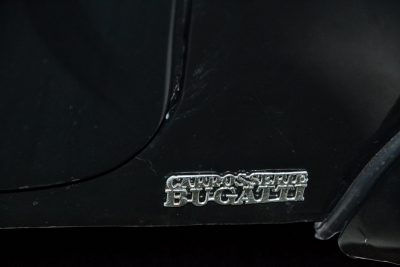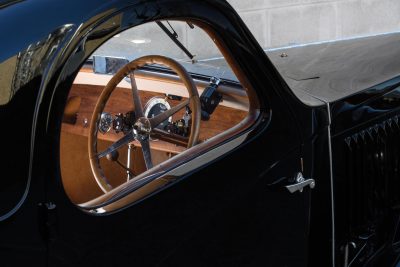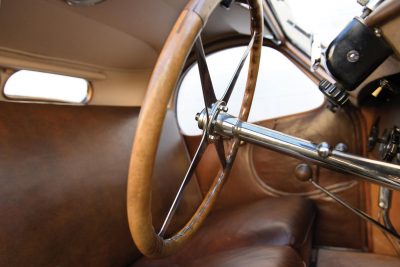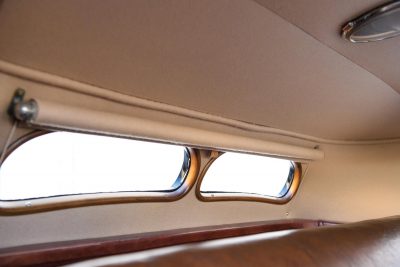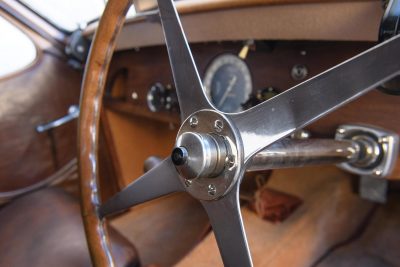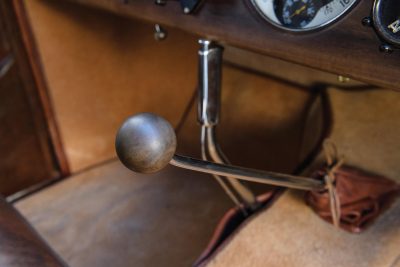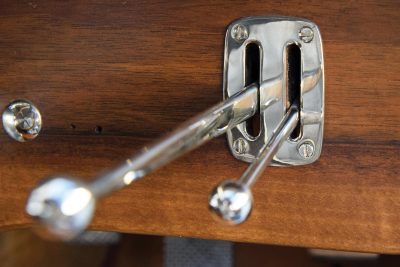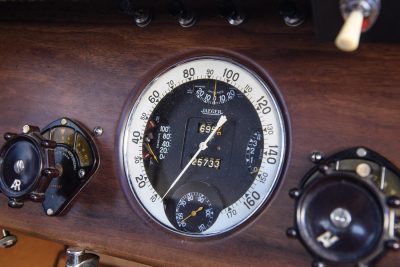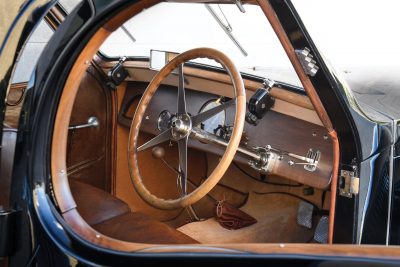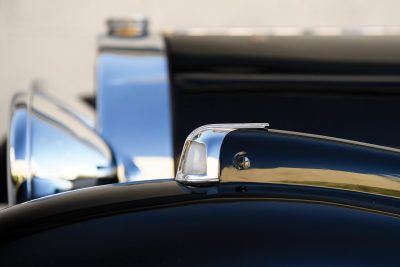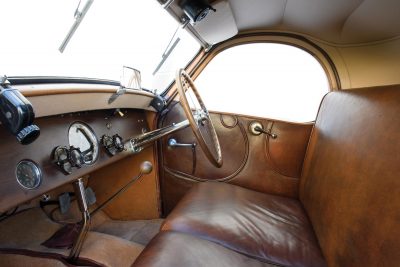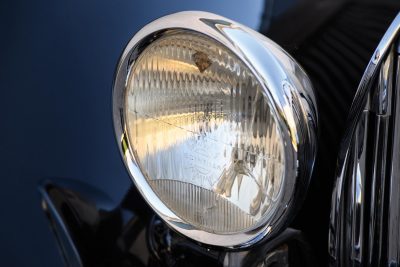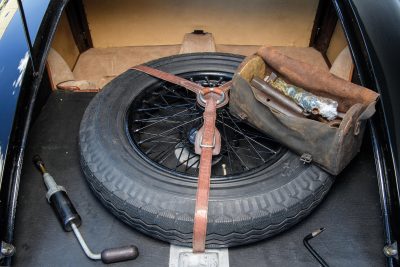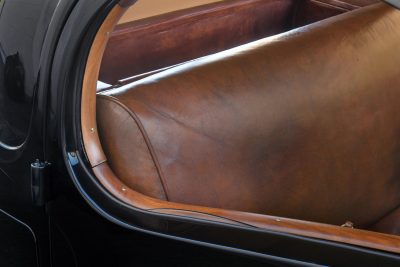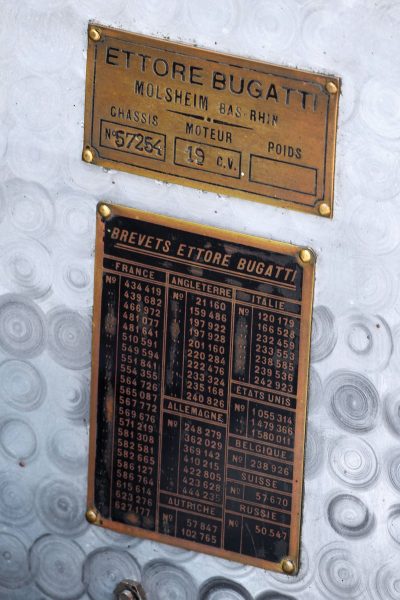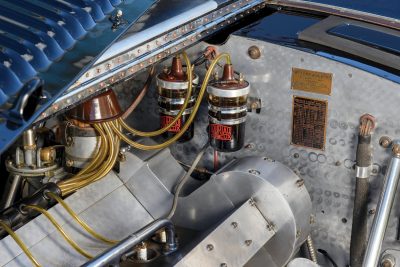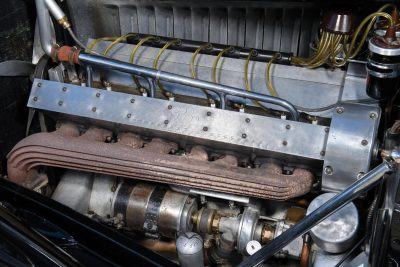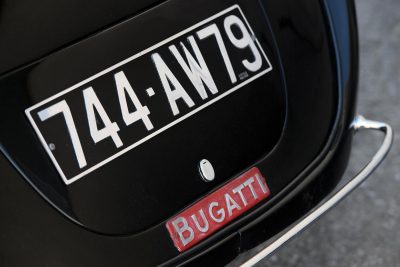Here is an eye-popping exotic. A car that many would rank number one among the most famous vehicles ever made. The Type 57 Bugatti came in Atlantic and Atalante forms, with this prototype being the third ever produced in 1935. And one of just three survivors from production, no less.
This example is special for more than just its exquisite design. That is something else, however. Smooth fenders without the rivet seam are plush, but the shrouded back wheels and “faux cabriolet” roofline are what prove give the Atalante such glamor from all angles. This pert little notchback of a hardtop gives the Atalante a dreamy silhouette versus the fastback teardrop shape of the 57SC Atlantic. (Or its 1935 Bugatti 57S Aerolithe sibling below.)
The Atalante’s floating fenders up front and hood louvres deserve ages of study. Fine art takes time.
This exact car was owned by the Bugatti factory director and finishes in-house. Its bodywork was normally outsourced but Carrosserie Bugatti did their own family projects. Things like Ettore Bugatti’s personal Royale, for example, wear the CB provenance of Molsheim coachwork.
This black beauty is a stunningly fast luxury car that deserves its evergreen valuations in the 7-figure range.
This T57 will be sold by RM Sotheby’s at the May 27, 2017 Villa Erba auctions.
If the next owner cherishes it for as long as the current one, this Bugatti legend won’t be for sale again until the year 2079.
1935 Bugatti Type 57 Atalante Prototype by Carrosserie Bugatti
RM Sotheby’s
Villa Erba 2017
- Chassis no. 57254
- Engine no. 202
1935 Bugatti Type 57 Atalante Prototype
- The third Atalante built; unique early Atalante coachwork features
- Extremely rare coachwork by Molsheim’s in-house carrosserie
- One of approximately 34 built on the Type 57 chassis
- Originally owned by two-time Targa Florio winner and factory director Meo Costantini
- Retains original matching-numbers engine and coachwork panels
- Engine upgraded in period by the factory
- Single-family ownership for 62 years; less than 26,000 original kilometres accrued
- Documented with factory records, correspondence, and by marque expert Pierre-Yves Laugier
Of all the factory-penned body styles built on Bugatti’s Type 57 chassis, perhaps none is as significant as the Atalante. With only 34 examples produced from 1936 to 1938, the T57 Atalante is much rarer than the Stelvio, Ventoux, or Galibier, and the design’s purposeful lines and proportions (credited to Jean Bugatti but perfected by in-house stylist Joseph Walter), provided sportier packaging for the 57’s advanced dual-overhead cam engine and independently sprung chassis. Exceeded in cachet today only by the Type 57SC Atlantic, the Atalante is overwhelmingly regarded as the most sporting iteration of the celebrated Type 57.
Chassis number 57254 is one of the earliest Atalante examples built, being one of four prototypes of the rare body style. The model was originally designated by the manufacturer as the ‘faux-cabriolet’, and this is how 57254’s body style is described in factory production records. Technically the third Atalante built, though bearing the second-lowest chassis number of the four, 57254 was assembled in the spring of 1935, ultimately one of just 10 examples built that year. Only three are still known to exist, of which this car is undoubtedly the most original.
Photo Credit: Tim Scott ©2017 Courtesy of RM Sotheby’s

Tom Burkart is the founder and managing editor of Car-Revs-Daily.com, an innovative and rapidly-expanding automotive news magazine.
He holds a Journalism JBA degree from the University of Wisconsin – Madison. Tom currently resides in Charleston, South Carolina with his two amazing dogs, Drake and Tank.
Mr. Burkart is available for all questions and concerns by email Tom(at)car-revs-daily.com.

